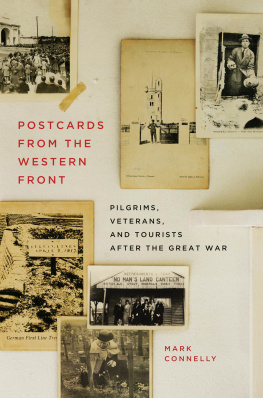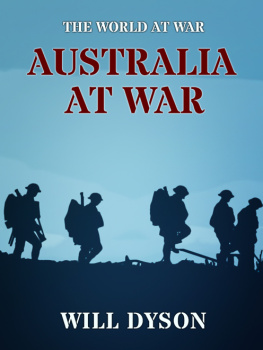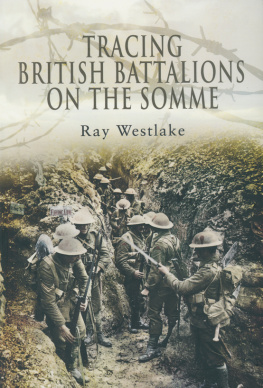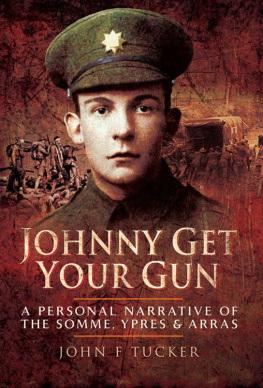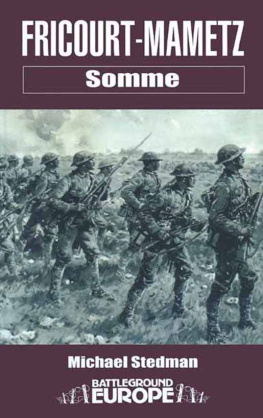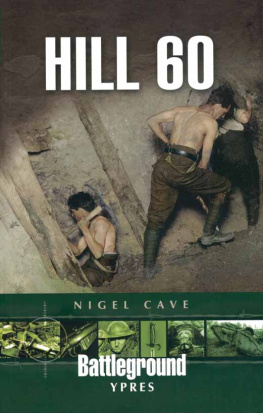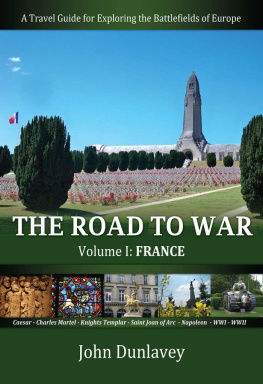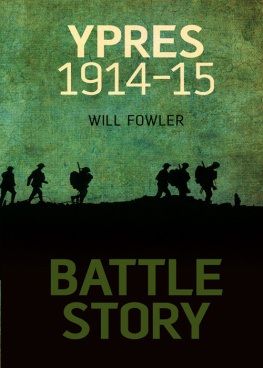
For Claudia.
First published in Great Britain in 2014 by
Pen & Sword Military
an imprint of
Pen & Sword Books Ltd
47 Church Street
Barnsley
South Yorkshire
S70 2AS
Copyright Gareth Hughes, 2014
ISBN 978 1 47382 139 2
eISBN 9781473841000
The right of Gareth Hughes to be identified as Author of this Work has been asserted by him in accordance with the Copyright, Designs and Patents Act 1988.
A CIP catalogue record for this book is available from the British Library. All rights reserved. No part of this book may be reproduced or transmitted in any form or by any means, electronic or mechanical including photocopying, recording or by any information storage and retrieval system, without permission from the Publisher in writing.
Printed and bound in England
By CPI Group (UK) Ltd, Croydon, CR0 4YY
Pen & Sword Books Ltd incorporates the Imprints of
Pen & Sword Aviation, Pen & Sword Family History,
Pen & Sword Maritime, Pen & Sword Military, Pen & Sword Discovery, Pen & Sword Politics, Pen & Sword Atlas, Pen & Sword Archaeology, Wharncliffe Local History, Wharncliffe True Crime, Wharncliffe Transport, Pen & Sword Select, Pen & Sword Military Classics, Leo Cooper, The Praetorian Press, Claymore Press, Remember When, Seaforth Publishing and Frontline Publishing.
For a complete list of Pen & Sword titles please contact:
PEN & SWORD BOOKS LIMITED
47 Church Street, Barnsley, South Yorkshire, S70 2AS, England
E-mail: enquiries@pen-and-sword.co.uk
Website: www.pen-and-sword.co.uk
About the Author

Gareth Hughes is the Head of History and Head of Lower School at Pocklington School, near York. From 2011-2014 he served as Secondary Education Advisor to the learned body of the British Association for American Studies. He is a sometimes public speaker, conference host and education consultant. Alongside leading school and adult group tours to the battlefields and sites on the Western Front, he has led tours to Normandy, Moscow, St Petersburg, Washington D.C., New York, Alabama, Georgia, Paris, London and Munich. You might also find him, from time to time, serving up banal and trivial comments to the world on Twitter @thehistoryman.
Preface
George Henry Hughes is a name that will mean nothing to you and nor should it. He was my grandfather. In 1916 he found himself in a previously unremarkable area of northern France which I am sure will be familiar to you: the Somme. Unlike the 19,240 on the first day alone who were not so lucky, George survived the battle and the war but spent the rest of his life plagued by ill-health brought on by the wicked toll of shrapnel wounds.
In 1995 I first visited the battlefields of the Great War as a fourteen year old student. The experience was humbling, emotional and ultimately life-changing. It is a pilgrimage that I have subsequently taken every year since becoming a teacher, taking hundreds of students around France and Belgium, both as an accompaniment to their history studies and, more importantly, as a wider aid to their human understanding.
This book is the distillation of some of that experience. It is not meant to be exhaustive, nor even a full tour guide. There are many great sites and memorials that do not make it onto these pages. What it is, however, is the highlight reel.
This book is primarily written for secondary school history departments who wish to undertake a one to three or four day tour of some of the iconic sites of the battlefields of the Western Front. However, it will also be of interest and use to the inexperienced and perhaps first time general visitor to the battlefields. The major focus is on the Somme and Ypres areas, with a few suggestions for those looking to go a little further afield. The book is aimed largely at the non-expert departments (i.e. History Departments who do not specialize in this area/have not taken these trips before or who have previously relied upon tour guides whilst abroad) but will also be useful to those departments which are more confident on the Western Front as a one volume pick-up-and-deliver resource.

Many colleagues I know have felt incredibly daunted when trying to devise their own itinerary and tour due to the huge number of sites and guide books/histories on the market. As the number of these guides has proliferated, so has the miniscule focus on niche areas of the war. This book is an attempt to strip away that level of detail, all quite brilliant for the battlefield expert but too much for the teacher tour leader, and package a tour of the Western Front that teachers can deliver and students will enjoy.

Therefore, I make no apologies for leaving out details that an expert would deem vital, such as regiments and battalion movements, unless I felt them absolutely necessary in enhancing the understanding of a particular visit for the expected type of audience. This is not meant to be a definitive military history; the main aim is to provide context, narrative and a gripping experience, which will hopefully inspire the individual to carry out reading and research of their own and give them an interest for life.
Quite simply, my hope is that this book gives you all you need to deliver a moving, entertaining and memorable trip.
For the individual visitor this book will enable you to get a good grasp of the key areas and history through a few accessible itineraries for self-touring.
Finally, I must pay my debt to the masters of this genre whose books I hope you will now seek out. If it were not for the outstanding and numerous publications by Major and Mrs Holt, the Battleground Europe series and the magnificent Before Endeavours Fade by Rose Coombs then my own ventures across the Western Front would simply not have happened. This book is where you start your journey their books are where you master it.
Gareth Hughes, Pocklington, February 2014.
The Great War in Numbers
| 4 years, 4 months, 14 days | duration of the war |
| 64.7 million | men mobilised by all combat nations during the war |
| 35 million | casualties |
| 15 million | dead |
| Victoria Cross medals awarded |
| % of French population killed or wounded |
| 7.5 million | soldiers with no known grave |
| soldiers killed per hour of the war |
| 250,000 | British amputees |
| 91,198 | deaths from gas attacks |
| 185 billion | cost in dollars of the war |
| 720,000 | size of British Army in 1914 |
| 5.7 million | men mobilised into BritishArmy by 1918 |
| 10,000 | killed, died, wounded or missing on 11 November 1918 |






